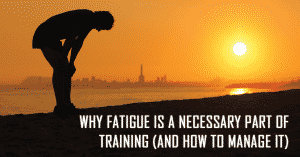The summer season is in full swing and for most runners this doesn’t conjure thoughts of the beach and barbeques, but rather the realization that marathon training has kicked into high gear. With just 12 to 16 weeks left before most of the major fall marathons, it’s time to buckle down and get serious about training.
Since training time is precious, you need to make the most out of every run on your schedule. Here are some of the most common training mistakes marathoners commit and how you can avoid them.
Selecting an arbitrary goal time
As I covered in depth last week, the foundation of a solid marathon plan is selecting a goal time that is realistic and corresponds to your abilities and current fitness levels.
All too often, runners choose their goal time based on a qualification mark or an arbitrary number. This almost immediately sets them up for failure. First, it prohibits training at the correct effort levels to elicit optimal physiological adaptation. More importantly, it usually results in getting injured as you push beyond your capabilities.
What to do
How did you determine your goal time? If your decision wasn’t primarily based on your previous race finishes or results from shorter races, you need to read this article to learn how to set a more realistic goal time.
Not practicing race day nutrition in training
Simply grabbing a few gels and drinking when you feel like it in training is not specific enough to optimally prepare you for race day. This haphazard approach to marathon nutrition usually results in cramps, bonking and bathroom issues.
Moreover, getting race day nutrition perfect requires more than just one or two runs. You need to experiment with how your body reacts to the different flavors and consistency of gels and sports drinks, changing weather conditions (you’ll need to drink more on hot days, which if not practiced, can result in bloating and cramping), and how far apart your stomach can handle different amounts of fuel and fluids. Finding the right recipe takes time and practice.
What to do
First, establish a detailed plan. Think of everything. Will you use the cups on the course, bring your own gels/water, how often will you drink and eat, what flavors will you use, will you stop or run through the water stops?
Once you’ve got your plan in place, begin to mimic this strategy as often as you can in training, tweaking and tinkering small things each week to find the perfect nutrition plan. For more tips on how to practice, read our guide to practicing marathon hydration and nutrition.
Panicking after a bad workout
You are going to have a really bad workout in training. In fact, you’re probably going to have a few. Unfortunately, even when you know this, a bad workout is still damaging to the psyche. You start to question your fitness. Are you working too hard? Not hard enough? Will you be ready for race day?
The result of this over thinking is that you panic, which usually results on you doing something stupid, like trying to make up the workout the next day or running extra hard during your next session to “make up” for the bad day.
However, this is one of the biggest mistakes you can make. It almost always results in overtraining, injury and will have detrimental, compounding effect on all your upcoming workouts.
What to do
Don’t panic and remember that having a bad workout is a normal part of marathon training. The best approach is to examine why you had a bad day and try to fix that problem before your next session. Did you not fuel well? Not get enough sleep?
Make sure you address these more important factors to ensure more consistent workouts over the long-term. Moreover, look for lessons in the negatives. Did you run too hard on your easy days? Was your pacing off? Learn from these lessons and make your next workout count.
Not increasing nutritional intake for recovery
When training for the marathon, you’ll likely be running more mileage, harder workouts, and grueling long runs. All this training means you have to focus even more on recovery, which means increasing your calorie intake.
Most runners forget to monitor their calories-in versus their calories-out as they increase their mileage and training intensity. They keep eating the same foods and same proportions as usual (sometimes purposefully to try and lose weight).
As a result, the body does not have the fuel and nutrients it needs to recover. You start to become tired all the time, lack energy for training, and struggle to recover between workouts.
What to do
First, determine how many calories you’re burning throughout the day (including your running mileage) and compare this to how many calories you’re taking in (count the calories in all the food you eat for a typical day). I am positive your calorie intake will be much lower than you expected – unless you eat a lot of junk food, in which case only add up the “healthy” calories to determine how many calories are going towards optimal recovery.
RunnersConnect Bonus
Download your Calorie Calculator for Runners. This calculator will tell you the exact amount of calories you burn each day so you can better target your nutrition needs.
Next, since you’re focused on optimal recovery, add an extra 300-500 calories to your total calorie expenditure to guarantee you’re getting the calories and nutrients you need. Make sure these additional calories come from lean sources of protein and nutrient dense fruits and vegetables, not junk foods.
Not practicing pacing techniques
Learning to properly pace yourself during a race is one of the most critical skills a runner can develop. The line between setting a new personal best and a near miss is razor thin, especially if you are a veteran runner with an impressive training log and lofty goals. Running just a few seconds too fast or too slow at any point in your race could change your primary energy system and spell disaster for a personal record attempt.
Consider Haile Gebrselassie’s world record attempts at Berlin in 2008, where he became the first person to run under 2:04 for the marathon, and Dubai in 2009, where he faded badly the last 10 kilometers. In Dubai, Gebreselssie was a mere 23 seconds faster at halfway compared to his world record pace in Berlin the year before. However, even this small shift in pace (about one second per kilometer) resulted in a crash that resulted in him finishing some 90 seconds slower than his Berlin time over the final 10k.
Unfortunately, pacing is not an aspect of racing most runners are particular good at. A recent study found that recreational runners misjudges pace by almost 40 seconds per mile compared to an experienced college runners that estimates inaccurately by just 10 seconds per mile.
What to do
Work tirelessly throughout your training these next few months to improve your pacing skills. You can follow the tips in this article to hone your pacing skills. In addition, you can work to shed your reliance on Garmin and GPS apps and learn to run by feel. Regardless, the more you practice the better prepared you will be for race day.








2 Responses
“Consider Haile Gebrselassie’s world record attempts at Berlin in 2008, where he became the first person to run under four hours for the marathon”
I think this is a typo of some sort…
Whoops, indeed 🙂 Thanks for pointing it out!!